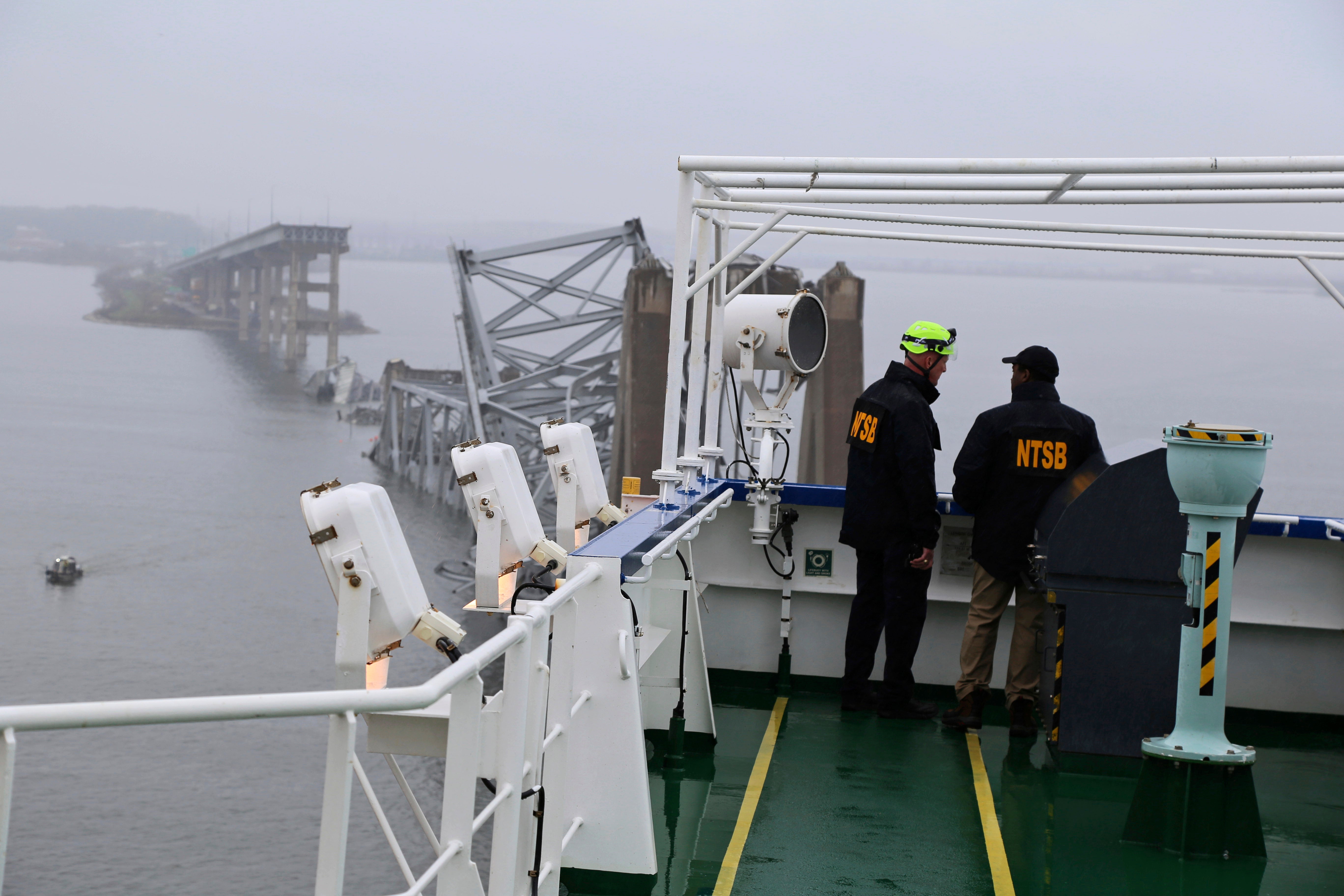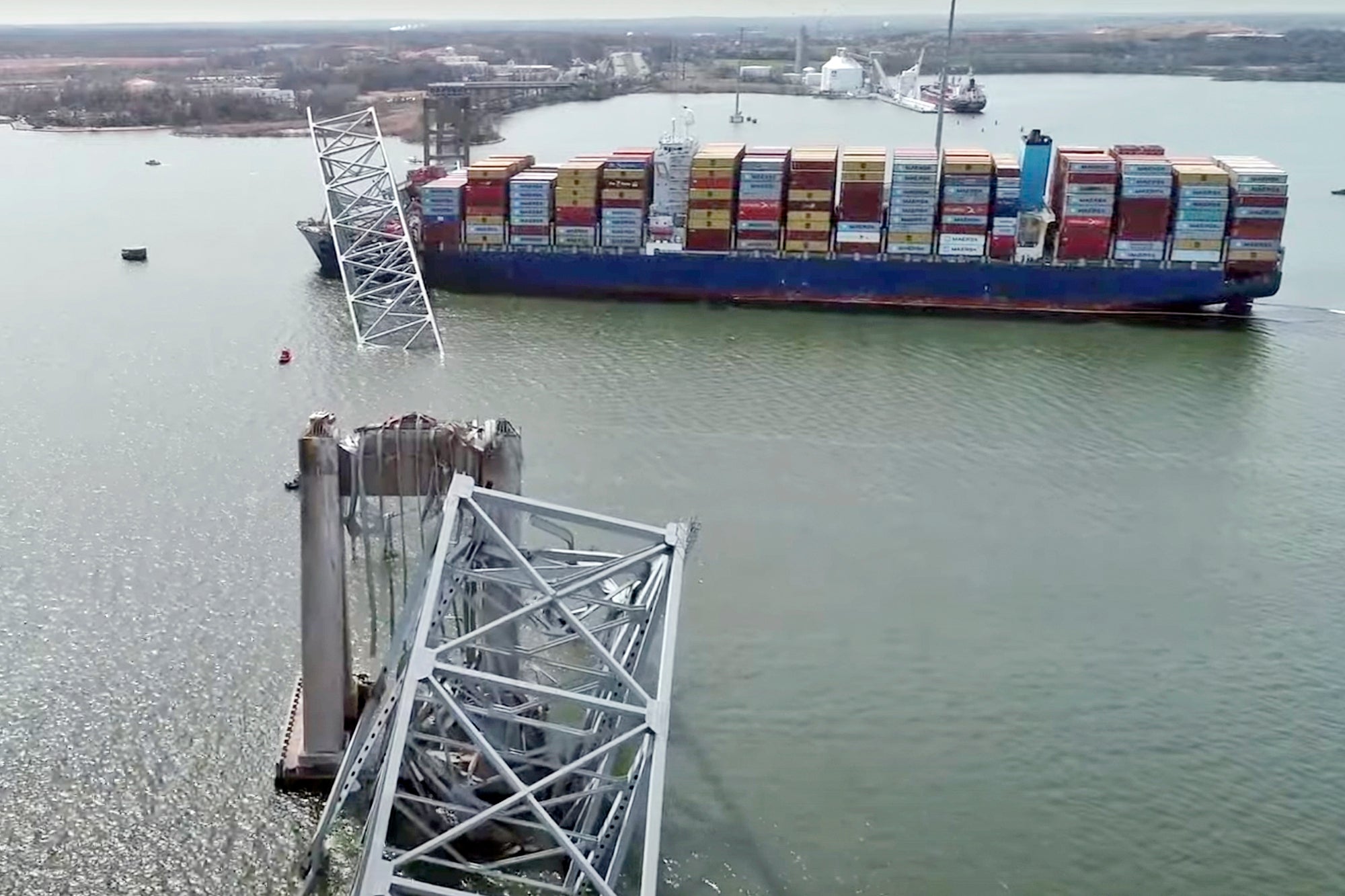Baltimore Bridge collapse timeline: Ship’s black box reveals tragic last moments
Federal investigators released a chilling minute-by-minute timeline of the moments leading up to the Dali ship crashing into the Francis Scott Key Bridge
Federal investigators have now recovered the black box of the ship that crashed into Baltimore’s Francis Scott Key Bridge, with the data revealing a minute-by-minute timeline of what happened in the run-up to the tragedy.
The Dali container ship rammed into the bridge in the early morning hours of 26 March after losing power.
Six members of a construction crew who were working to refill potholes on the bridge at the time were thrown into the water. Two bodies were found in a pickup truck submerged in the Patapsco River on Wednesday, while police have publicly identified four of the victims. All six are presumed dead.
Questions are now being asked about what exactly caused the fatal crash.
Now, some of those questions are being answered as the National Transportation Safety Board (NTSB) has retrieved the vessel’s voyage data recorder, or black box.
Data from the device has shed some light on the dark moments just before the ship slammed into the bridge.

Here is what we know about the timeline so far:
At 12.39am, the Dali container ship departed from Baltimores’s Seagirt Marine Terminal.
Thirty minutes later, at 1.07am, the vessel entered Fort McHenry Channel.
Numerous alarms were recorded on the ship’s bridge audio at 1.24am. Around the same time, the voyage data recorder (VDR) stopped recording the vessel’s system data, but was able to continue taping audio from an alternative power source.
Two minutes later at 1.26am, the VDR resumed recording the Dali’s system data and captured steering commands and orders about its rudder.
That same minute, the pilot issued a very high frequency radio call to nearby tugboats requesting assistance for the stricken vessel. Data from the Maryland Transportation Authority (MDTA) showed that the pilot association dispatcher called the MDTA duty officer about a blackout.
At 1.27am, the pilot ordered the Dali to drop the port anchor, along with other steering commands. The pilot also issued another high frequency radio call, reporting that the ship had lost all power and was approaching the Francis Scott Key Bridge.
A transit authority duty officer alerted two units — one on each side of the bridge — who were already on scene and ordered them to stop traffic, shutting down all lanes.
By 1.29am, the Dali was moving at just under 8 miles per hour. The VDR recorded 33 seconds of sound “consistent with” the vessel colliding into the bridge, the NTSB wrote.
That’s when the pilot radioed the US Coast Guard to report the bridge had collapsed. This is the last piece of information that the NTSB provided from the black box.
At 2.25am on Tuesday, the search and rescue mission began.

Soon after, two survivors were pulled from the river, while the desperate search for six missing construction workers on the bridge continued.
Officials said the six men, all members of a construction crew employed by Brawner Builders, had been working on refilling potholes when the incident occurred.
Family members identified two of their loved ones as among the victims: Maynor Yassir Suazo Sandoval, 37, and Miguel Luna, 49.
The search efforts continued until 7.30pm, when the Coast Guard announced that the search effort was suspended for the night with the six men presumed dead. The search would become a recovery effort the next morning.
“I’d like to announce tonight that based on the length of time that we’ve gone in this search, the extensive search efforts we’ve put into it, the water temperature, that at this point we do not believe that we’re going to find any of these individuals still alive,” said Rear Admiral Shannon Gilreath.
At 6am the next day, divers began the search and recovery effort.
Hours later, just before 10am, agencies made a “tragic finding,” Col Roland Butler Jr of Maryland State Police said on Wednesday night. The bodies of two victims – Alejandro Hernandez Fuentes, 35, and Dorlian Ronial Castillo Cabrera, 26 – were found inside a red pickup truck submerged in 20 feet of water.
Mr Butler didn’t specify where the two were from, but said that those presumed deceased are from Mexico, El Salvador, Guatemala and Honduras.
He added that the agencies involved in the search were transitioning from a “recovery mode” to “salvage recovery operation”.
Join our commenting forum
Join thought-provoking conversations, follow other Independent readers and see their replies
Comments
Bookmark popover
Removed from bookmarks